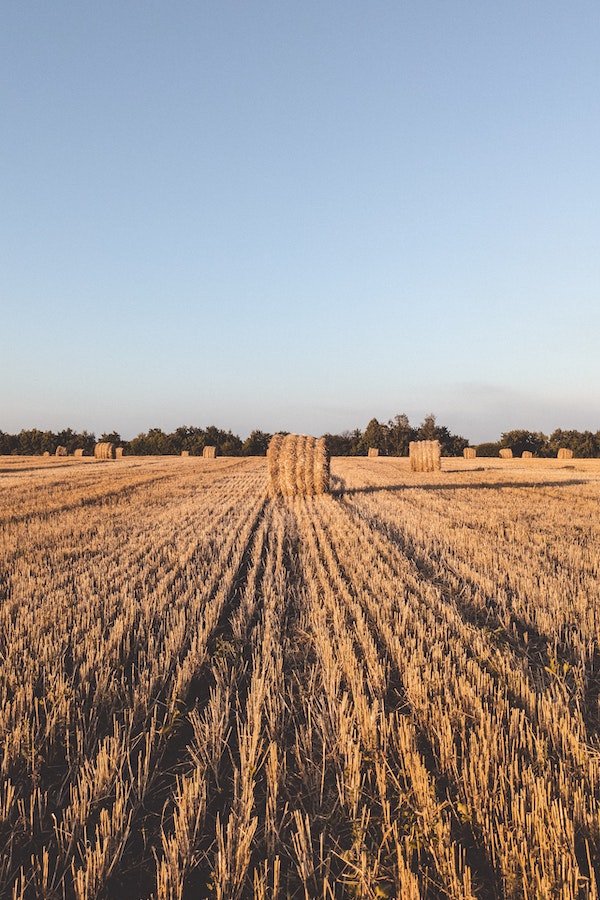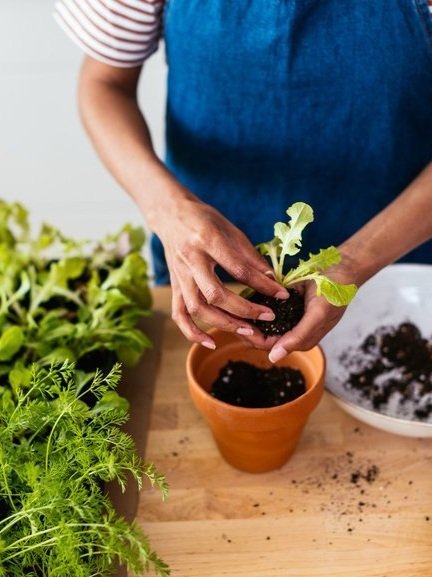
What Is Regenerative Agriculture?
I grew up in the suburbs of Cincinnati but spent all my time in the country. As a veterinary technician and sheep producer, I have seen the positive impact on the health of the animals and the land when regenerative agriculture and soil health principles are followed.
I’ve also watched as, over the last half-decade, the diverse family farms in the Midwest had become replaced by large fields of monocrops. The few acres of hay and grains have vanished, and in their place are large fields of monocrops: vast stretches of corn, soybeans, or wheat.
Farming in this way—called conventional agriculture—has been thought of as ideal because it minimizes time invested while maximizing profit. But unfortunately, conventional agriculture has also caused a harmful chain reaction.
The Impact of Conventional Agriculture
To understand the importance of regenerative agriculture, we must first look at the impact of conventional agriculture, which focuses on growing as much of one crop as quickly as possible.
“Conventional agriculture relies on tilling soils, planting monocultures, removing livestock, and applying synthetic chemicals.”
This farming practice relies on various methods, including tilling soils, planting monocultures, removing livestock, and applying synthetic chemicals. The same land is used repeatedly to grow the same crops, and the crop field is sometimes left bare after harvest.
But little consideration is given to the harmful impact of these practices. Tilling soil, for example, exacerbates erosion, removes moisture, and disturbs the vital life within the ground (which is essential in breaking down nutrients for plants). Additionally, the herbicides and pesticides used to kill weeds harm plants and animals—and they are largely to blame for decreasing pollinator populations.
According to a National Institute of Food and Agriculture study, pollinators are needed to propagate 100 US crops, including clover, alfalfa, and other forage crops used to feed livestock. We also depend on pollinators for one-third of the food we eat.
Moreover, more potent herbicides and insecticides are needed as plants and insects develop resistance, making the cycle of conventional agriculture self-perpetuating. And growing the same crops on the same land lowers the nutritional quality of foods.
Changing the status quo requires doing things differently. That is where regenerative agriculture comes in. Living things can prosper by concentrating on restoring the land and balancing natural processes.
Regenerative Agriculture & The Importance Of Soil Health
Regenerative agriculture strives to revitalize the natural systems we depend on for food, including air, water, and soil. At its core, it’s a shift in mindset: Focusing on a balanced system that mimics nature is a way of farming that understands that everything on earth is interconnected.
“Regenerative agriculture looks at the big picture of how everything fits together—plants, animals, and us.”
— Brendan Prendergast, Agricultural Producer
“Regenerative agriculture looks at the big picture of how everything fits together—plants, animals, and us,” says Brendan Prendergast of Whispering Grass Farms in southeastern Ohio. Prendergast, an agriculture producer, has worked in organic and regenerative agriculture for 16 years.
“No matter what product we grow, we depend on the air, sunlight, water, and healthy soil. More than any other time in the past, soil health is paramount,” says Prendergast.
And we are just beginning to understand the complex interactions between soils, microorganisms, and plants. When soils are healthy, they produce nutrient-dense crops and grasses, translating to more nutritious food. Healthy soils hold more water, are more resilient, and store significant amounts of carbon.
How do we ensure soils are healthy? By following five principles:
-
Minimize soil disturbance and support soil structure and life. Soil acts like a sponge and has dense areas and empty spaces, holding water and air. When soils are tilled, we change the structure, destroy these natural spaces, and expose the soil to the sun, causing heating and erosion.
-
Keep soils covered to prevent sun heating, water loss from evaporation, and erosion.
-
Increase biodiversity by diversifying plants that contribute different nutrients and advantages to the soil. The biodiversity above ground is needed to support the various fungi, bacteria, and microscopic animals within soils
-
Ensure plants are growing at all times. Plants produce oxygen and remove carbon from the air, storing it in their tissues and the soil; live roots assist in nutrient cycling and maintain the health of the necessary organisms within the soil. Thriving plants are responsible for the soil’s ability to assist with climate change.
-
Integrate livestock into farming practices. Livestock adds organic matter from stomped-on plants, manure, urine, and even saliva. Manure and urine contain needed nutrients in immediately useable forms, while synthetic commercial fertilizers must be broken down into different components by the plants, requiring energy and time.
“By following these soil health principles, the planet is more resilient.”
By following these soil health principles, the planet is more resilient. Scientists have documented that regenerative farms that combine no-till, cover crops, and diverse rotations have healthier soils. The crops produced in these soils have higher levels of certain vitamins, minerals, and phytochemicals.
Additionally, for every one percent increase in soil organic matter, soils can hold an extra 20,000 thousand gallons of water per acre. More water stored in the soil helps us withstand weather extremes, reducing flooding and decreasing the impact of drought.
How To Support Regenerative Ag. In Your Community
“Understanding the importance of healthy soils and living plants, farmers that practice regenerative agriculture are changing the way food is produced,” says Linda Poole, grazing specialist with the National Center for Appropriate Technology.
But adopting new agriculture practices isn’t easy. “Our food system has been based on producing large amounts of food for the lowest possible price without much thought to the impacts on the environment or future production,” says Poole.
“Knowing who produces the food you consume ensures you have a voice in how it’s grown and if it benefits the environment.”
Implementing practices that restore soils and conserve freshwater comes at an increased cost to farmers. In the U.S., we expect inexpensive food to be on the shelves anytime we want it. When the pandemic interrupted supply chains, consumers were caught off guard. Greeted by empty shelves, many of us were forced to think about how our food is grown and where it comes from.
Knowing who produces the food you consume ensures you have a voice in how it’s grown and if it benefits the environment. Purchasing directly from regenerative farmers and frequenting restaurants that utilize local food may cost a bit more or require more effort, but your choices speak to what is important to you.
LocalHarvest.org will help you connect with farmers near you. If you are not within driving distance of local producers, farmers’ markets are held across the country, and CSA subscription services often offer delivery service straight to your door.
These choices benefit your health, local farmers, the economy and, in the long term, the planet’s health and ability to be resilient in the face of a continually changing climate.
“Even if you live in the city or apartment, you can help ensure a better future for food and the environment.”
Even if you live in the city or apartment, you can help ensure a better future for food and the environment. You can become involved by planting vegetables in containers or gardens and sharing with your neighbors, assisting pollinators by planting native flowers in a window box, or replacing a patch of lawn with a wildflower garden.
In addition, conserving freshwater, not letting the faucet run, collecting rainwater to water the garden, or transforming an empty lot to begin an urban garden are all regenerative activities that, when added together, make a substantial positive impact.
“We have learned that changing one part of natural systems creates cascading effects impacting all other aspects,” says Poole. “Adopting regenerative practices helps ensure the food produced is good for us and the land. Regenerative agriculture goes beyond sustainable and supports a thriving future.”
Promoting a healthy, vibrant land with practices that are adaptive, conserve natural resources, and mimic nature as much as possible, ensures that we have a future to look forward to.
Denice Rackley is a freelance science writer specializing in educational articles related to the environment and agriculture. She has worked as a veterinary technician, teacher, and medical assistant and has made her home in the country raising sheep and working collies for over 25 years. You can find more of her work here.



